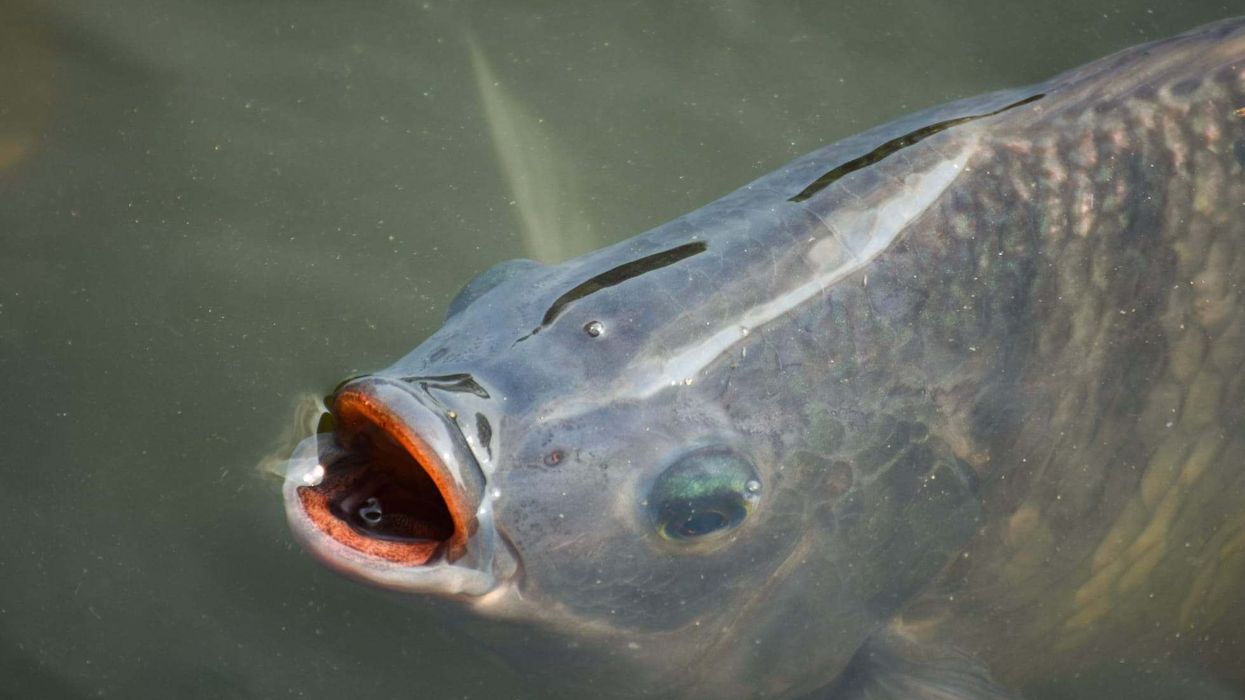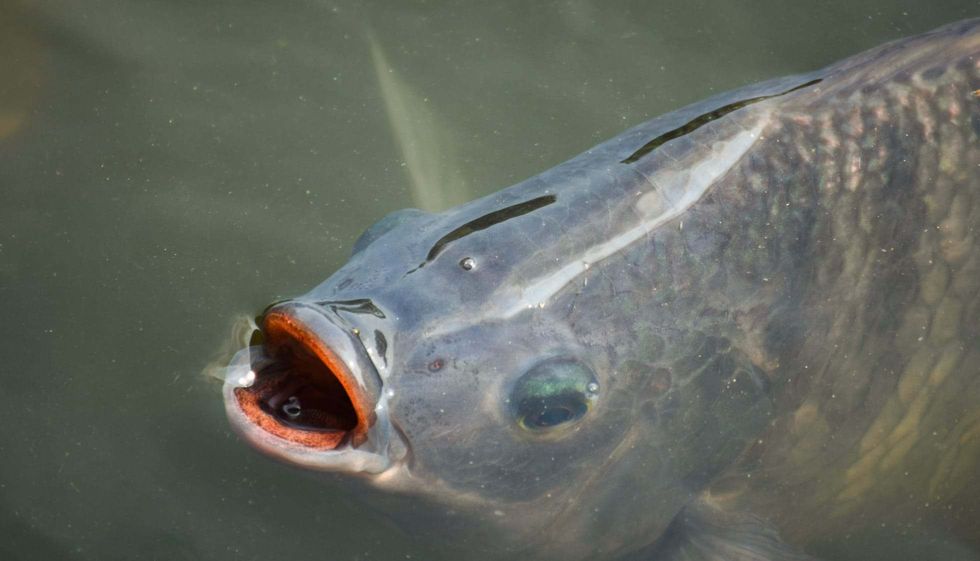Have you ever fished a Nile tilapia (Oreochromis niloticus), which is also commercially known as Nilotica, Mango fish, or Boultiacross the African coasts? If not, put this fish on your to-do list for your next fishing trip, as you might get a great experience fishing this invasive fish species.
An African freshwater cichlid, the Nile tilapia (Oreochromis niloticus) is one of the world's most popular food fishes. You may easily identify this species from their indistinct banding on their bodies, a vertically striped tail, and brownish or grayish color.
A second thought is recommended if you plan to add this fish species to your aquarium or pond. The Nile tilapia is known as a pioneer species because it thrives in disturbed environments, migrating and reproducing opportunistically. These characteristics indicate that in areas where it has been introduced, Nile tilapia often outcompetes native species.
Did you know that after carp and salmonids, tilapias are the third most farmed fish globally, accounting for 4% of global aquaculture production? Do scroll down to learn exciting and fun facts about this fish species, and look for John Dory and Koi facts in our other articles too!
Nile Tilapia Interesting Facts
What type of animal is a Nile Tilapia?
The Nile tilapia (Oreochromis niloticus) is a cichlid fish of the tilapia family. Tilapia is one of many fish species found in Africa and the Middle East that belong to the Cichlidae family.
Tilapias have been introduced to many parts of the world due to their ability to adapt to a wide range of environments, their omnivorous eating habits, and their success in the aquaculture industry.
What class of animal does a Nile Tilapia belong to?
The Nile tilapia belongs to the Actinopterygii class. Tilapia Oreochromis niloticus linnaeus is the scientific name of this species and is also called Tilapia del Nilo in Spanish as per records of the food and agriculture organization.
How many Nile Tilapia are there in the world?
The exact count of the Nile Tilapias population is unknown as the species are widespread and abundantly available in ponds, rivers, and freshwater habitats. Several distinct populations are often recognized as valid subspecies, even though the Fishbase considers the species monotypic. The Tilapia Oreochromis niloticus linnaeus occupy most of the species range globally.
Where does a Nile Tilapia live?
The Nile Tilapia is found in Africa's tropical and subtropical regions and the Middle East.
They are widely spread and commonly found in western and eastern Africa, including the Nile and Niger river basins, as well as the lakes Tanganyika, Albert, Edward, and George, as well as many smaller drainages and lakes; also in the Middle East, including the Yarkon River in Israel.
These fishes are also commonly found in ponds, the Lake of Chad basin, lake Kivu, and brackish water, but they cannot live in complete saltwater for long periods.
What is a Nile Tilapia's habitat?
The Nile tilapia is a tropical fish that lives in shallow water. Nile tilapia has lower and upper lethal temperatures of 11-12 °C and 42 °C, respectively, with a preferred temperature of 31-36 °C.
It has been widely adopted in Africa, and other continents, with tens of countries in Southeast Asia, North America, Europe, and South America.
This species frequently becomes highly invasive in these areas, posing a threat to native habitats and wildlife. The Nile tilapia can be found in various freshwater environments, including rivers, streams, canals, lakes, and wetlands, and can be found at elevations ranging from sea level to 6,000 ft (1,830 m).
Who do Nile Tilapia live with?
Nile tilapia, like other fish, primarily migrate in schools. Males usually settle down in their nesting zones, but females migrate between zones to find mates, resulting in male-female rivalry.
How long does a Nile Tilapia live?
The Nile tilapia has a lifespan of more than 10 years.
How do they reproduce?
Nile tilapia reproduce by mass spawning a brood inside a nest built by the male, as do most fish. Territoriality and sexual competition among males result in significant differences in reproductive success for individuals in a population in such an arrangement.
Inbreeding is likely to occur across different generations due to differential male reproductive success, resulting in reduced genetic diversity in the long run. Tilapias reproduce within a few months of birth, possibly due to reproductive competition.
The dominant male in this species creates a social hierarchy in which mating is prioritized. They use their mouths to dig circular nests (spawning sites), protect the nests from intruders, court females, and mate within the nests.
Female Nile tilapias care for eggs and larvae in their mouths, hence are called mouth breeders. The young fry or eggs are borne in the mother's mouth for 12 days after spawning in a male-made nest.
If the mother believes the children are not ready for the outside world, she will force them back into her mouth. In times of risk, Nile tilapias also display parental concern.
What is their conservation status?
The Nile tilapia fishes are available in bulk across freshwater bodies like ponds, lakes, and rivers. Hence the conservation status of this fish species is Least Concern.
Nile Tilapia Fun Facts
What do Nile Tilapia look like?
Natural-looking, wild Nile tilapias have a brownish or grayish overall coloration, with indistinct body banding and a vertically striped tail. Males turn reddish when they breed, particularly on their fins.
Nile tilapia fishes can be identified by its distinctively striped caudal fin, which has 20-26 gill rakers and 30-34 lateral scales on the lower limb of the first-gill arch. In addition, the lower head, body, and dorsal and caudal fins of breeding males have a red flush.
How cute are they?
The white Nile tilapia looks cute for some and scary for others
How do they communicate?
Fishes are known to use various silent communication devices, and the Nile tilapia is no exception. Pairs use different sensorial signals during male-female encounters, influencing their reproductive activity and gonadal state.
Cichlid fish have highly developed vision, and visual contact is an integral part of their reproductive interaction.
On the other hand, cichlids have been confirmed to use chemical communication as a means of reproductive communication.
The dominant male of the cichlid Nile tilapia, Oreochromis niloticus, increases the chasing and courtship of females, but these behaviors are not seen in anosmic males. However, in Nile tilapia, the background color of a substrate modulates the frequency of spawning, and the species exhibit elaborate courtship movements, implying that visual communication is important.
How big is a Nile Tilapia?
The Nile tilapia can grow up to 25 in (63.5 cm) long; however, they are smaller when compared to a Nile perch.
How fast can a Nile Tilapia swim?
The Nile tilapia fish is known to swim fast; however, the exact swimming speed of this fish species is unknown. As per a few studies, higher swimming ability was found in Nile tilapia from river environments when compared to the reservoir.
How much does a Nile Tilapia weigh?
The weight of a Nile tilapia can grow up to 11 lb (5 kg) or even more.
What are the male and female names of the species?
The male and female species do not have a distinct name. However, they are called male Nile tilapia and female Nile tilapia.
What would you call a baby Nile Tilapia?
The baby of a Nile tilapia is called a young Nile tilapia, and there is no specific name.
What do they eat?
The Nile tilapia (Oreochromis niloticus) is primarily a herbivore, but it has omnivorous tendencies, especially when young. The most essential foods for Nile tilapia are phytoplankton, macrophytes, insects, detritus, and zooplankton.
Except in Lake Koka, plant-based foods are the most prevalent food item, and seasonal variations in diet composition were not observed in the water bodies. In the dry season, Nile tilapia fishes feed on phytoplankton, whereas, in the wet season, they feed on macrophytes, detritus, zooplankton, and aquatic insects.
Are they eaten by humans?
A Nile Tilapia (Oreochromis niloticus linnaeus) can be eaten and is a great source of nutrients and protein. This fish can be grilled, pan-fried, oven-baked, and in many varieties.
The red Nile tilapia is a very popular food variety in Thai cuisine. Tilapia is a popular and common supermarket fish in the United States.
Tilapia Nilotica is one of the most common fish in Egyptian cuisine and perhaps the most popular in areas far from the coast. They are the most common fish in some South Indian reservoirs, and it is available all year.
The cost of whole white tilapia varies significantly throughout the United States and globally. In the United States, live fish at the farm is sold for around $2.20-$6.60 per 2 lb.
Would they make a good pet?
Tilapia del nilo, also known as Nile tilapia, are common aquarium fish. However, keep an eye on them regularly, as these fishes are highly invasive.
Apart from the aquariums, this species is known for the rise in household incomes from small farms and eateries associated with farms, fisheries, and tilapia aquaculture.
Did you know...
Have you ever heard of a fish species being used as a weapon against mosquitoes? The Nile tilapia is also known to feed on detritus and aquatic insect larvae, including mosquito larvae. The Nile tilapia fish species feeding mosquito larvae make it a potential weapon in the war against malaria in Africa.
Did you know that in aquaculture, hybrid stock is often used? For example, a Blue Nile tilapia hybrid is typically black, but a light-colored hybrid breed known as Rocky Mountain White Nile tilapia is often grown due to its very light flesh and low-temperature tolerance.
Is it safe to eat Nile Tilapia?
Nile Tilapia can be cooked in various ways and eaten. This abundantly available fish is low in cost and high in proteins and nutrients.
However, a few studies state that tilapia should never be eaten! Let's find out why.
Tilapia is high in omega-6 fatty acids, which we already consume in excess in today's culture. Excess omega-6 can intensify and induce inflammation to the point that bacon appears to be heart-healthy. Inflammation can cause heart disease and aggravate the symptoms of people with asthma and arthritis.
Tilapia vs similar fish
Tilapia fishes come in several varieties, much like most fish and animals. Nile, Blue, and Mozambique tilapia are three of the most widely fished and consumed tilapia species. These three fish are distinct in more ways than just appearance, with differences in form, scale, and color.
Nile perch vs tilapia species: It's worth not getting confused between Nile Perch and Nile Tilapia. Nile perch in its native East African waters is not a tilapia but rather a member of a different genus. The real Nile perch, a relative of our snook, reaches monstrous size, and tilapia is a smaller fish.
Here at Kidadl, we have carefully created lots of interesting family-friendly animal facts for everyone to discover! Learn more about some other fish, from our brook trout fun facts, and Achilles tang interesting facts pages.
You can even occupy yourself at home by coloring in one of our free printable Nile tilapia coloring pages.









